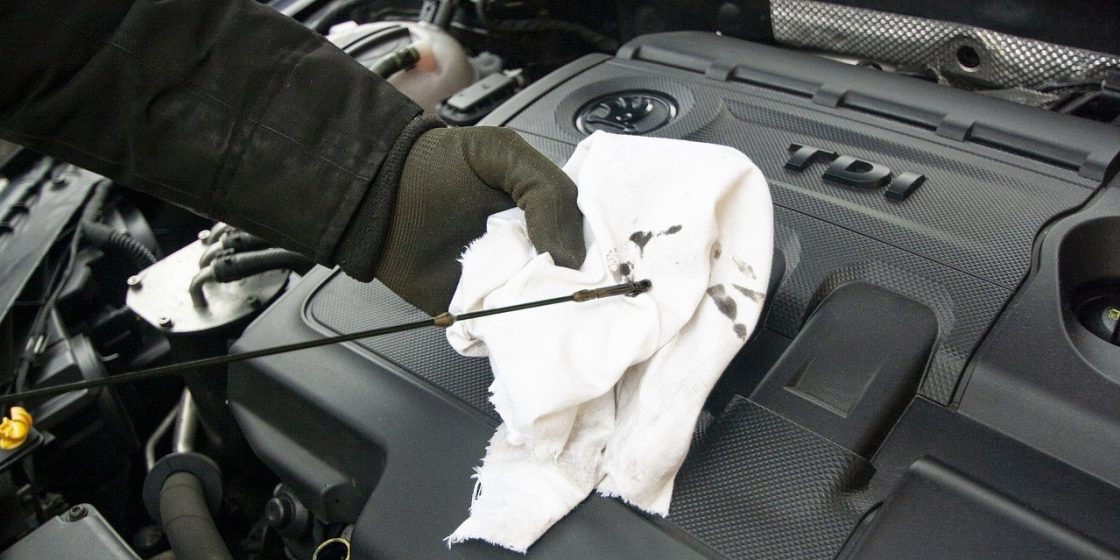How to Check the 5 Essential Fluids in Your Car

Photo by Skica911 under Pixabay License
Here’s a Guide to Show You How to Do it Right
While it’s undeniable that today’s vehicles are the best they’ve ever been, they’re still in need of regular maintenance. Like us, our cars also deserve pampering and care to achieve optimum performance and extend their lifespan.
One of the key things you need to do regularly is to examine your automobile’s five essential fluids. These fluids play a vital role in maintaining fuel economy and vehicle longevity. Keeping them at their proper levels will help your car run better and last longer. Checking your car’s essential fluids is quick and easy, and you don’t need to have a professional do it for you.
Here’s a guide showing you how this is done:
1. Engine oil
Oil is the most important fluid in your car since it keeps all your engine components running smoothly.
To check your engine oil, remove the dipstick, wipe it clean, insert it back, and then pull it up to check the oil level in your engine. The dipstick should indicate a normal level. If the oil is low, you’ll need to refill it based on the recommendations found in your owner’s manual. A low reading may indicate that your engine is leaking or burning oil, which may cause damage if left ignored. Be sure not to overfill, either.
Aside from your oil level, you also need to check the oil’s condition. Smear the oil on the dipstick between your fingers. If it doesn’t feel smooth, or you notice any grittiness or particles, this may indicate that your engine components are wearing down.
Also, take a look at the color. Yellow or amber oil is a good sign, while black or dark coffee tells you that it’s time to get your oil replaced. A milky-colored oil indicates that the coolant is leaking into the engine.
2. Coolant
Also known as antifreeze, your coolant works to keep every part of your engine cool. Maintaining the proper coolant level prevents overheating. If your vehicle comes with a coolant expansion tank, check if the coolant falls between the maximum and minimum indicators. If it doesn’t have a tank, you should open the radiator cap to see if the antifreeze is filled to the top. Before adding your coolant, see to it that the type you’re using is approved for your vehicle.
Never check your coolant while the engine is still hot. Pressurized antifreeze tends to spray and cause burns. Wait for the engine to completely cool down.
3. Brake fluid
Brake fluid can get contaminated by water over time, causing brake lines to rust. Leaks may also form, which may cause irregular brake performance or a spongy pedal feel.
Inspect your brake fluid reservoir, which is located in the engine bay, and pay attention to its level and color. As with other fluids, its level should fall between the minimum and maximum indicators. Fill it if it’s below minimum. See to it that you’re using the appropriate type of fluid.
While there are different types of brake fluid with their particular colors, all of them shouldn’t be dark or cloudy but rather, translucent. Once you’re no longer able to see through your brake fluid, you need to change it as soon as you can.
4. Power steering fluid
Power steering systems make maneuvering easier at just about any speed, and most of them use pressurized fluid.
Look for a reservoir or dipstick in the engine bay, remove it, and check the markings. Top it off if the fluid is low. Make sure to use the recommended fluid type to avoid damage. If you find yourself adding fluid often, then you might want to examine your car for a leak.
5. Windshield washer fluid
Although your windshield washer fluid doesn’t affect your car’s performance, it still plays a major part in safety. Plus, it’s the simplest fluid to maintain.
Pour the fluid into the reservoir until it’s full, close the cap, and you’re good to go. You can buy jugs of windshield washer fluid at an auto supply store or a gas station, and they’re sold at affordable prices.
Your Unwanted Car Can Help Save Lives
Did you know that your idle sedan can be used to bring hope to the destitute women in your area who have been diagnosed with breast cancer? You can make that happen by donating that vehicle to us at Breast Cancer Car Donations.
We will place your donated vehicle up for auction, with the proceeds going straight to leading breast cancer nonprofit organizations that are in partnership with us. Like us, these IRS-approved 501(c)(3) nonprofits work tirelessly to support women across the country who are suffering not just from breast cancer but lack of financial resources as well, preventing them from getting proper treatments.
Our charity partners use the funding they get from us to provide uninsured and low-income breast cancer patients with financial assistance to cover the costs of their medication, hospitalization, and treatment. These charities also provide breast cancer survivors with follow-up care. Other beneficiaries get to receive free breast cancer screening and other breast health services.
You will also benefit immensely from your charitable contribution. It will entitle you to receive the maximum tax deduction in the next tax season. Moreover, we’ll provide you with our free pickup and towing service wherever you are in the United States.
Best of all, you’ll get to experience the priceless satisfaction of doing a life-saving charitable act.
You can donate not just a car but just about any other type of vehicle regardless of its age or condition.
For information on our quick and convenient donation process, feel free to check out our FAQs page. If you have questions, don’t hesitate to call us at 866-540-5069 or leave us a message here.
Be a Lifesaver Today!

Photo by Anna Shvets under Pexels License
Who says you need to have superpowers to help save lives? All it takes is a simple car donation to us. Call Breast Cancer Car Donations at 866-540-5069 or fill out our secure online donation form now!
Last Updated: March 10th, 2023
